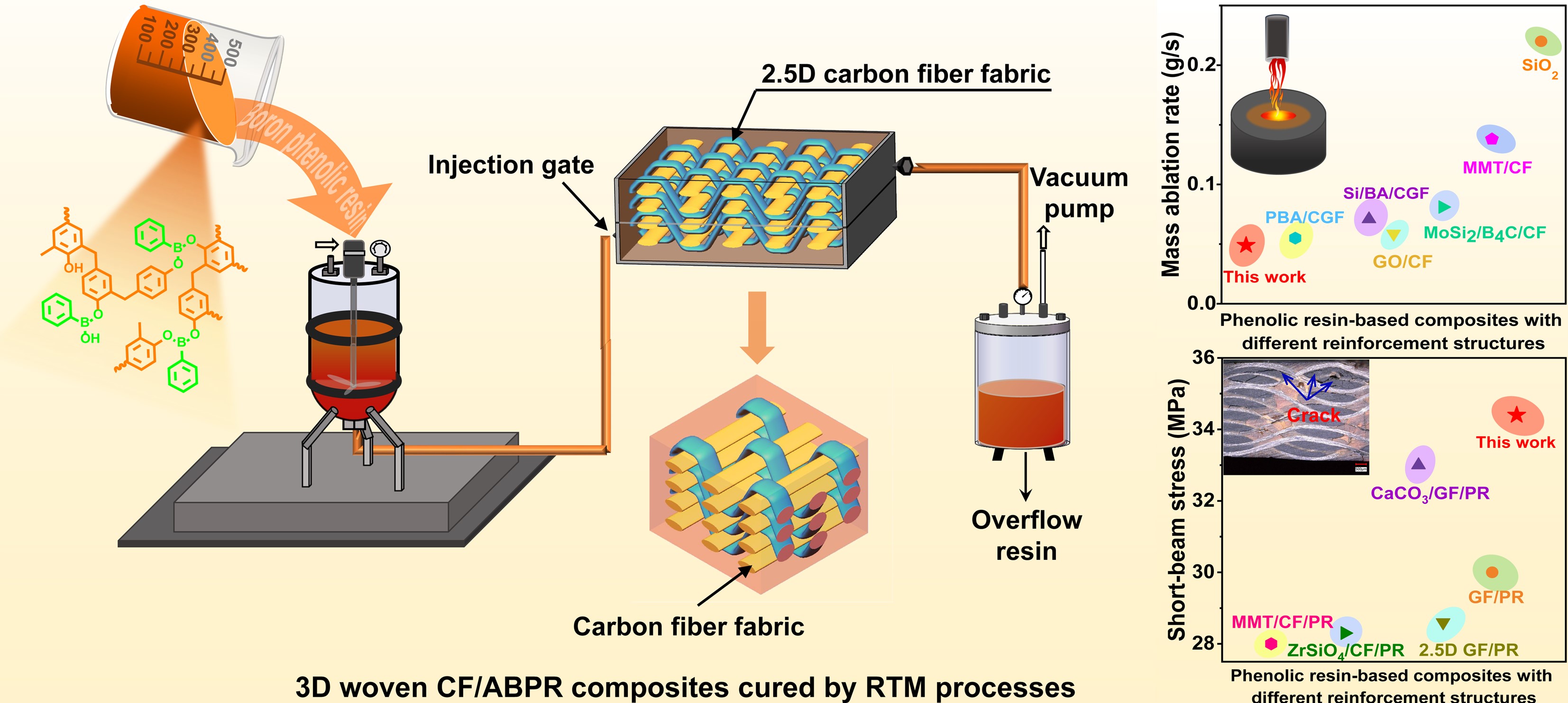RGFP published a paper on Polymer Degradation and Stability - 首页
The nozzle-expanding component of solid rocket motors is generally produced utilizing the winding tape process. However, the above resin-based ablation materials have a two-dimensional structure and weak interlaminar shear strength, making it difficult to use them for an extended time in high-pressure, high-pressure, and high-speed airflow. Compared with traditional composite molding processes such as hand lay-up or prepare lay-up methods, the resin transfer molding (RTM) process can be used for multidimensional complex materials with high dimensional accuracy, which not only increases the designability of the material structure, but also can meet the requirements of ablation-resistant composites. Boron phenolic resins (BPRs) are one of the most widely used matrix resins in the ablation field due to their excellent thermal properties and ablation performance; however, the existing BPR applications are severely limited since they are unsuited for RTM processes. This research created and manufactured aryl-boronic acid (PBA) modified phenolic resins (ABPRs) for RTM techniques. The addition of PBA significantly improved the heat resistance and oxidation resistance of ABPRs. Three-dimensional CF/PBPR composites with good mechanical and ablative properties were prepared using carbon fiber three-dimensional fabric as the reinforcement and ABPR as the resin matrix. Therefore, this research led to the development of boron phenolic resins with high carbon yield that can be used for RTM processing, removing the technical barrier posed by the crucial matrix resin that prevented the creation of ablation-resistant parts for nozzles and presenting a fresh approach for developing the production of high-performance, large-scale ablative matrix resin.
The first author of the paper is Prof. Shujuan Wang and the corresponding author is Prof. Xinli Jing.

=====================================================================================================
固体火箭发动机喷管扩张段主要采用布带缠绕成型工艺制备,但采用该工艺制备的树脂基烧蚀材料为二维结构,其层间剪切强度较低,难以在高温高压及高速气流的冲刷下长时间使用。与传统的模压、层压以等复合材料成型工艺相比,树脂传递模塑(RTM)工艺可用于尺寸精度高的多维复杂材料,不仅增加了材料结构的可设计性,而且能够满足更高的耐烧蚀使用需求。硼酚醛树脂(BPR)由于其出色的耐热性和烧蚀性能,是烧蚀领域中最广泛使用的基体树脂之一,然而,现有的BPR无法满足RTM工艺,极大地限制了其应用。本研究设计并合成了适用于RTM的芳基硼酸(PBA)改性酚醛树脂(ABPRs)。PBA的加入显著地提高了ABPRs的耐热性和抗氧化性。以碳纤维三维织物为增强材料,ABPR为树脂基体制备得到具有良好力学性能和烧蚀性能的三维CF/PBPR复合材料。因此,本研究研制的RTM工艺用高成碳硼酚醛树脂,突破了制约喷管耐烧蚀部件研制的关键基体树脂的技术瓶颈,满足耐烧蚀部件对树脂性能的要求,为开发大尺寸高性能耐烧蚀基体树脂提供了新思路。
论文的第一作者为王淑娟副教授,通讯作者为井新利教授。
-
2023
10-18
-
2023
08-23
-
2023
08-23
-
2023
07-30
-
2023
07-24
-
2023
07-14

 (创新港)
(创新港)


